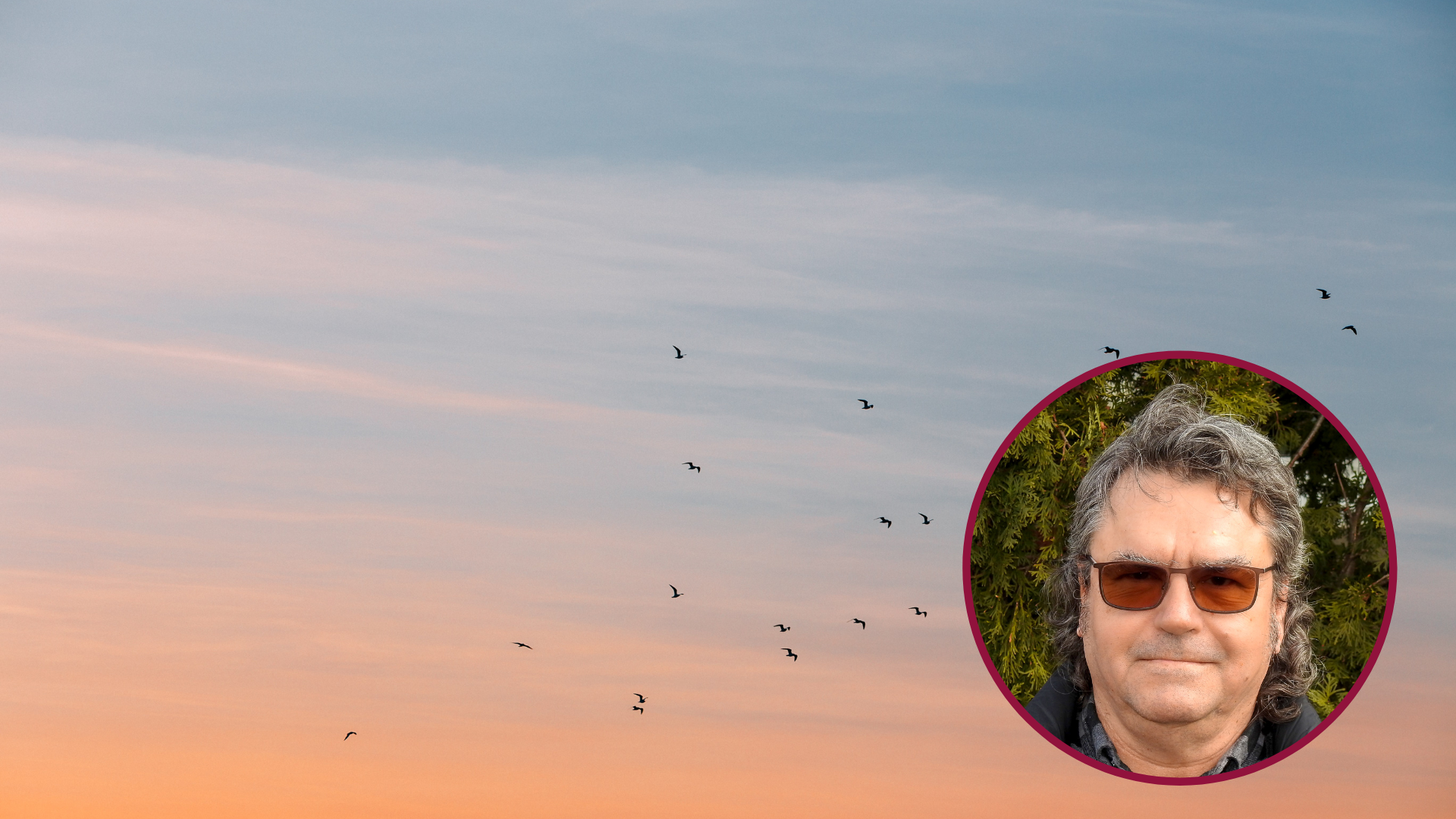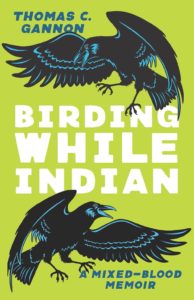
Thomas C. Gannon is an associate professor of English and ethnic studies at the University of Nebraska–Lincoln and a lifelong birder and inhabitant of the Great Plains. He is an enrolled member of the Cheyenne River Sioux Tribe.
Thomas shared more about his upcoming book Birding While Indian: A Mixed-Blood Memoir, why he never thought of the work as a memoir, and the impossibility of writing about birds without being political.
 Birding While Indian is both a chronicle of your life as a part-Lakota inhabitant of the Great Plains and an exploration of the land’s history of colonial violence—all told through significant moments from a lifetime of birding. When did you know you wanted to write this book?
Birding While Indian is both a chronicle of your life as a part-Lakota inhabitant of the Great Plains and an exploration of the land’s history of colonial violence—all told through significant moments from a lifetime of birding. When did you know you wanted to write this book?
I first got the idea of writing a book about my “favorite” birding episodes—and arranging them in a chronological order—over a decade ago. As I began to sketch out some of the episodes, it became clear to me that I couldn’t escape the racial politics of growing up a poor mixed-blood in Rapid City, SD, or the ongoing colonialist ideology of so many great birding venues on the Great Plains, such as Custer State Park and Indian Cave State Park. Plus, there’s the whole historical connection of colonialism’s similar treatment of human Natives and indigenous animals/birds. During a writing retreat a few years ago, someone said, “Write the book that only you can write.” I think I’ve certainly done that. That doesn’t mean it’s a book that anyone else will want to read!
You describe Birding While Indian as the “untoward anti-memoir of a mixed-blood fellow who began birding around age eight, when he discovered he was a neurotic introvert who preferred to be away from other people.” What does memoir mean to you, and what makes this book an “anti-memoir”?
Well, I never really thought of it as a memoir, until the people around me—colleagues and editors, etc.—started calling it that. So it’s an anti-memoir, on one level, because I never intended to dwell on my own life, or personality, outside of birding. But again, growing up with an Indian mom and food stamps pretty much changed all that, and the character sketches of my mom, grandma, and great-uncle are some of my favorite parts of the book—but they all kinda got in the book by—accident?—as something to “fill in” between the bird outings. . . . But in the context of the quotation above from my Preface, I actually mean that I don’t believe in an integral psyche that can actually control an organic narrative—or be truly represented within that narrative. That is the more theoretical reason that I never tried to write a “memoir” in the first place: in this postmodern (and post-Freudian) era, the genre seems to assume a rather antiquated view of human psychology. (But I am probably just demonstrating in these statements that I don’t know much about the genre in the first place?!)
The book brings together a vast amount of material, interweaving personal memories and stories with poetry, historical texts, theory, and ornithology. Did you encounter anything unexpected in the process of writing or researching for this book?
I learned—or at least was reminded!—that “all discourse is political” (that is, invested in ideology and desire). I tell my students this all the time, but this book really drove that home. The discourse in this book includes all the regional place names, signage, tourist pamphlets, etc., that still champion Manifest Destiny and a “Cowboys v. Indians” Wild West mentality; it includes natural science texts that seem ostensibly objective but yet of course include many of the patriarchal, anthropocentric, and even racial biases of their time. Then there’s English studies’ propensity to interpret other species as “symbols” for something human: symptomatic of a thoroughly anthropocentric ideology. I might even offer the book itself as evidence that you can’t even write about a simple subject like BIRDS without being political.
What are you proudest of within the book?
I think the portraits of my grandmother, great-uncle, and mother have quickly become my favorite sections to reread myself. Which is so ironic, for a book “about birds and birding.” After writing my mom’s deathbed chapter, I realized that the book should have been (even) more about her, and less about me. Though I’m also sticking to my statement that the book is not about me!
Why should more people take up birding? If someone is new to birding, what advice would you share with them?
Well, if you’re a bookish academic like me, it gets you outside and prevents NDD (Nature Deficit Disorder)! Also, if you’re in a Humanities discipline like me, birding is a great corrective to being immersed in a field that is still so damned “human, all too human”: “Huh?,” you might suddenly realize: “There are other species of animals besides little ol’ self-absorbed humankind?!” It’s a great way to break out of one’s human-centeredness. Which, for the future of the planet, is probably a good thing.
But my book also ends by wondering whether even I should be a birder, but I’ll let that remain a tease. (Yes, it boils down to politics.) But—if you’re an OCD person like me, who loves making lists—birding might be the perfect all-obsessive avocation. I’d recommend a decent pair of binoculars (7x35 or stronger) and Sibley’s bird guide, for starters. And join a local/regional birding community on social media and start asking questions! (That’s how an introvert like me does it. If you’re an extravert, you might have some actual birder friends!)
Have you read anything recently that you really enjoyed? Are there any upcoming books that you are looking forward to?
I just finished a book of ecocriticism/”animal studies” called Animality in British Romanticism: The Aesthetics of Species, by Peter Heymans. I love eco-theory books about the representation of other animals in human discourse. His thesis: “all this human talk about other animals is political”?!—or “aesthetic,” to use his problematic term. . . . But I also tell my students that “I’ve already read myself stupid” by this point in my life, and I’ve been trying to devote more time and attention to real life—that is, to real birds. (Ironically, 2022 was my worst birding year in many years because I spent so much time finishing up this book project—on birding!) . . . Finally, I also like rereading old favorites: so maybe Silko’s Almanac of the Dead or a Dostoevski novel is next on the docket. (Who am I kidding? I probably spend most of my reading time nowadays skimming through The Sibley Guide to Birds. 2nd edition.)

